
Related
Topics
As President Bush admits the existence of secret overseas CIA prisons, we take a look at the U.S. government’s shadowy program of extraordinary rendition with the authors of the new book: “Torture Taxi: On the Trail of the CIA’s Rendition Flights.” [includes rush transcript]
The first book documenting the US government practice of extraordinary rendition has just been released. It’s called “Torture Taxi: On the Trail of the CIA’s Rendition Flights.” We speak with the book’s authors, A.C. Thompson and Trevor Paglen.
- A.C. Thompson, staff writer at the San Francisco Weekly. In 2005 he won a George Polk Award for his investigative reporting.
- Trevor Paglen, an expert on clandestine military installations and is the author of the two-volume study “Secret Bases, Secret Wars.”
Transcript
AMY GOODMAN: The first book documenting the U.S. government practice of extraordinary rendition has just been released. It’s called Torture Taxi: On the Trail of the CIA’s Rendition Flights. I’m joined here in San Francisco by the book’s authors, A.C. Thompson and Trevor Paglen. A.C. Thompson is a staff writer at the San Francisco Weekly. In 2005 he won a George Polk Award for his investigative reporting. Trevor Paglen is an expert on clandestine military installations and is the author of the two-volume study, Secret Bases, Secret Wars. We welcome you both to Democracy Now!
A.C. THOMPSON: Thank you.
AMY GOODMAN: Congratulations on this book. It’s just coming out next week. This, your first interview. Tell us about the “torture taxi.” Why did you call it that?
A.C. THOMPSON: Because basically the CIA has created this whole network, this whole fleet of planes to ferry terrorism suspects to dungeons around the world and to hold them indefinitely. And we thought part of the story that people weren’t really looking at was the actual vehicles. If you’re going to take people to foreign countries, you have to have planes, you have to have pilots, you have to have an infrastructure. We felt like that was a way into the story to start looking at it and start sort of reverse-engineering and taking apart the whole program.
AMY GOODMAN: And tell us what you found. Who is doing these rendition flights? Where did you go in this country?
A.C. THOMPSON: We went all over the country. So we went — we started off going to Reno. Then we were in suburban Massachusetts to rural North Carolina. So we were all over. But the planes — many of the planes fly out of a rural airfield in Smithfield, North Carolina, that a CIA front company set up years and years ago after the Vietnam War, after the Church Commission hearings, and is basically a perfect place to fly secret operations out of, because it’s isolated, it’s small, and people don’t really pay a ton of attention to what’s going on there.
AMY GOODMAN: Trevor Paglen, what’s this company called?
TREVOR PAGLEN: The name of the company is Aero Contractors out of Smithfield, North Carolina.
AMY GOODMAN: Is this the same company that ran Air America during Vietnam? And can you explain what that is?
A.C. THOMPSON: You know, Air America was this sort of Vietnam era covert airline of the CIA that was directly controlled by the CIA and run by the CIA. And after Vietnam, basically the CIA moved out of the airline business just a little bit, and it relinquished a little bit of control. But they ask an Air America pilot, a guy who had worked for them for many years and retired, 'Hey, can you set up a new airline for us, and we'll help you set it up. You can run it. We’ll give you contracts. You can fly our guys, but it will be your little baby.’ And his name was Jim Rhyne, and his company was Aero Contractors out of North Carolina. And according to a former Aero pilot, the CIA told Rhyne, you know, 'Set the company up somewhere that's three hours flying distance from D.C. so you can always be in close touch with us and pick up our CIA agents,’ but also that ’you’re not going to be under the kind of scrutiny you would be if you were flying every day out of Dulles Airport.’
AMY GOODMAN: So what did you find? Which planes were flown out of Smithfield? What about the beginning of your book, where you talk about Nevada, the Nevada test site, Trevor?
TREVOR PAGLEN: Well, it’s not only Aero Contractors that flies these planes. There are several other companies that do similar kinds of things. But Aero Contractors is the main one.
One of the things that called attention to these aircraft was something unusual that happened in 2002. In December of 2002, four planes filed flight plans to the Nevada test site, and there’s a kind of community of aviation enthusiasts who pay attention to airplanes that go to unusual places and noticed these airplanes, started talking about them in online forums and started tracking them using FAA data.
It turns out that these airplanes then began flying to what one of these guys called “very interesting places,” places like Kabul, Libya, Morocco, and as information accumulated about these planes, it became very, very — increasingly clear that these, in fact, were CIA airplanes and in fact were involved in this extraordinary rendition program.
AMY GOODMAN: How did it become clear?
TREVOR PAGLEN: Well, it became clear, because stories started coming out. People like Khalid El-Masri began describing these disappearances. And when you looked at the flight logs then of these aircraft, they would correspond to some of these former detainees’ accounts.
AMY GOODMAN: We’re talking with Trevor Paglen and A.C. Thompson about their book Torture Taxi. Talk about the people who track these planes.
TREVOR PAGLEN: Well, it’s an unusual community. It’s a kind of hobbyist community. A lot of them don’t necessarily have — they don’t do this for political reasons. It’s a kind of curiosity. There’s a kind of almost like an aesthetics to it, looking at a system and trying to decode how it works, and this is something that people do as a hobby.
A.C. THOMPSON: So one of the guys that we hung out with had a homemade radar system that he was tracking U-2 planes on, and so we went with him outside a military base in Northern California while he tracked in real-time U-2 planes as they flew through the air on test flights. I mean, that’s the sort of thing that these people are doing. And so what we did is sort of adopted their techniques. 'Ok, so you know how to track planes. You know where they go. You know that even a CIA plane has to file a flight plan with the FAA. Let's use that information and figure out where these suspicious planes that we’ve linked to the CIA are going.’
AMY GOODMAN: Last year, when Democracy Now! producer Elizabeth Press and I went to Ireland, we interviewed an Irish activist who had been documenting and logging U.S. flights coming in and out of Shannon Airport in Ireland. Tim Hourigan of the Mid-West Alliance Against Military Aggression was among the first to document the secret use of Shannon by the United States for extraordinary rendition. This is an excerpt of what he had to say.
TIM HOURIGAN: The government was trying to cover up and minimalize everything that was going on at the airport, everybody saying that, you know, there’s nothing secretive or furtive going on at the airport. It was denied at the highest level in this country. And then some people set up a peace camp and started, you know, showing photographs of what was going on, giving figures, registration numbers of aircraft. And the state wasn’t particularly happy with that. Following a few actions, including the disarmament actions by Mary Kelly and the Catholic Workers, a high court injunction was sought to evict everyone in the peace camp and to prevent us from entering the grounds of the airport, where we had been monitoring before. It has had very little effect, because we just got a telescope, and we do it from, you know, a mile away.
AMY GOODMAN: Do you think most people in Ireland know what’s happening at Shannon Airport now?
TIM HOURIGAN: They didn’t before, but they certainly do now. They know that it has been used, but they — there’s still more that’s being covered up like the renditions you referred to. The jet involved in that, I have seen it at Shannon Airport and we have logged it a few times. And it’s never been inspected at Shannon Airport. None of the military flights at Shannon Airport have been inspected. The particular jet has been — has come through Shannon last year, the year before, going from the Middle East to the States. It’s never been inspected.
We have lodged complaints with the police, who are known as the Garda Siochana in this country, and they have never inspected that. So there’s still a lot more we don’t know, like are people being brought through in chains off to Guantanamo Bay. You know, we know there are troops coming through. That’s not even disputed anymore, but what’s on the military cargo flights, what type of weapons are being brought, what type of explosives, and are people being brought through for torture? That’s still being covered up by the authorities.
AMY GOODMAN: Tim Hourigan used to work at Shannon Airport in the aviation industry. Now he sits outside the fence, spotting these planes, monitoring and putting the numbers up of their — the tail numbers up on the internet. We’re talking with Trevor Paglen and A.C. Thompson. Their book is called Torture Taxi. Trevor, these kind of tail spotters?
TREVOR PAGLEN: Exactly. Tim is unusual in this community because he is doing this for political reasons. He thinks of this sort of thing as documenting a crime scene, for example. But many, many other people do something similar, which is stand around airports, take down the tail numbers of people. They’ll post this information to online forums.
And so, what — in these online forums, there’s a huge amount of accumulated information about where different airplanes have been, for how long they have been there, where they may have come from, where they’re going to. There’s a kind of a history record in them, in a way, that you can use to start correlating that information against former prisoners’ accounts and so forth.
AMY GOODMAN: Could you also talk more about how these groups work, with fictional boards of directors, now talking about the secret — the plane companies, how they function, how they cover up?
A.C. THOMPSON: Well, one thing that’s interesting is, I come from a background of doing corporate investigations for newspapers, and when you start looking at the kind of companies that the CIA is using to run these aviation companies to fly these planes, things don’t add up, very quickly. So you start noticing when you pull the corporate registration documents for these companies, for example, that almost none of them have actual real concrete headquarters. The only addresses you can find for these companies are at the addresses of their lawyers.
And you would expect, 'Okay, this is a plane company; they are going to be situated next to an airport with a hangar that a plane is in.' But most of them aren’t like that at all. It would just be — we would get the information on the company, and it would be run out of a little lawyer’s office, who knew nothing about aviation. And there was no way to find the actual humans who supposedly staffed these companies. And when you would look at, say, registration documents for three different years for a particular company, you would find that the signatures for the supposed CEO on these documents looked completely different each year.
AMY GOODMAN: You have signatures, one Colleen A. Bornt in your first chapter — “Signatures. There’s something wrong with the signatures on these documents” — and you compare the name twice.
A.C. THOMPSON: Exactly, and when you see something like that, especially when you’ve been doing this for a long time. You say, “Oh, this is not right.” But beyond that, when you put somebody’s name into a good, high-end online database and you can’t find any proof that they live anywhere, and they are supposed to be a CEO of a company, that gives you another clue that something is not right.
AMY GOODMAN: Is there evidence that when CIA connections get exposed they change their name or they move on?
A.C. THOMPSON: That was one of the really interesting things in this project, is early on in our research, we did a story about one of these companies based out of Nevada. We went and visited them, and the first time we visited them, there was one name on the door of the lawyer’s office, and the next time we came back, that name was no longer on the door, and they were basically going under a different name.
AMY GOODMAN: Can you talk about Afghanistan? Khalid El-Masri talks about being taken there and so many different people — Moazzam Begg, before he was in Guantanamo, he was in Afghanistan.
A.C. THOMPSON: We wanted to go to Afghanistan, because that seems to be one of the hubs for extraordinary rendition, guys like Khalid El-Masri. And it’s one of the places that the most information has leaked out about. Very little information has leaked out about Romania or Poland, for example, where we believe people also have been taken. So we went to Kabul looking to sort of find out what we could find out on the ground, to talk to people, human rights folks, the UN, average folks, and see what we could learn about these secret facilities.
And when we got there, we kind of learned to a certain extent that we were only looking a tiny piece of the story. We were interested in the CIA prisons and what was happening in them. And people in Afghanistan said, “You need to look at all of the military detention facilities in the country” — and there’s more than 20 — because basically people are being held incommunicado. They’re being tormented. They are not being — they can’t be visited by the UN or by human rights experts or even by the government of Afghanistan. And now it seems that some of these extraordinary rendition victims are getting mixed up with the military prisoners and getting moved over into military facilities from the CIA’s secret facilities.
AMY GOODMAN: One of the people you talk about is a commissioner of the Afghan Human Rights Commission, who was trying to get into these prisons and document what’s happening.
A.C. THOMPSON: And Dr. Bidar down in Gardez, Afghanistan is completely frustrated because he’s been trying to get in there for years, and he can’t get in there. They won’t let him in there, and this is a respected, prominent guy who is pro-American. So he’s interviewed scores and scores of people who had been held in these prisons. And I tell you, the things that these men had to say when we interviewed them were really chilling. I mean, they were absolutely terrifying, and they sounded just like Abu Ghraib.
They loosed dogs on the men, snarling German Shepherds. They were held naked for days. They weren’t fed for days. They were put in stress positions that were horribly painful and beaten if they broke from those positions. They were beaten over and over again. They weren’t told why they were there. They were interrogated relentlessly for days for being supposed Taliban or al-Qaeda sympathizers. They weren’t given the things they needed to properly practice their religion. I mean, all kinds of just horrendous stuff.
Dr. Bidar told us about one man who was forced to sit on a chair, he said, that penetrated his anus, that something was forced into his rectum torturously while he was tied to this chair. I mean, it was really revolting stuff. As we were talking to these gentlemen, I mean, some of them would start crying. Our driver, who was a tough Afghan former boxer left the room and started crying. I mean, it was really brutal.
AMY GOODMAN: So what do you make of President Bush famously saying we don’t engage in torture, Trevor?
TREVOR PAGLEN: Well, when he says, “We don’t torture,” he is not using the common sense definition of torture. When he says the word “torture,” he means something that was concocted by people like Alberto Gonzales and John Yoo. And the thing that — the definition that they made of “torture” is something far beyond what we would normally consider torture in our everyday language. So he’s not using the same definition that most of us would use.
AMY GOODMAN: Would you say sitting on a chair with something inserted in your rectum would be considered torture by that definition?
TREVOR PAGLEN: I think most people would consider that torture. I think Bush would not consider that torture, according to the legal memos that have been produced around this.
AMY GOODMAN: Trevor Paglen, you are a military geographer. What does that mean?
TREVOR PAGLEN: That means that I study the geographies that the military creates, looking at bases here domestically and overseas, and just trying to understand how the military works around the world.
AMY GOODMAN: You’re a specialist in secret bases. That’s what you do?
TREVOR PAGLEN: That’s one of the things I look at, yeah.
AMY GOODMAN: What are the secret bases in this country?
TREVOR PAGLEN: Well, the most famous secret base, I guess, would be Area 51, which a lot of people have heard of as a kind of mythical place. Well, it’s a real place. It’s been there since — it just had its 50th anniversary. It was built in 1955. It’s in Nevada.
AMY GOODMAN: And are some of these “torture taxi” flights — are they taking off from these areas? Is there a correlation?
TREVOR PAGLEN: Not so much. These bases are more for weapons testing and aviation, and I guess the correlation is that the planes that fly in and out of these secret bases behave very similarly to the way that these CIA planes behave. And so, that’s the correlation, I guess.
AMY GOODMAN: Were you surprised, A.C., by what you learned as you wrote this book, Torture Taxi?
A.C. THOMPSON: You know, I think that the stories that we heard in Afghanistan were surprising. You know, and I’ve written about police abuse in America for many years and about people being abused in American prisons. But the sort of similarity of the stories we heard from prisoners, the intensity of them, it kind of took us aback a little bit, and it was pretty gripping.
You know, the other thing that surprised us was just to realize that when you are the CIA, you do actually leave footprints all over the country, and you do leave paper trails, and there are ways to figure these things out. And, you know, we sort of had this idea early on that the CIA is dark, vast and omnipotent and that unless you are an intelligence community insider, you can’t really penetrate and figure out what they’re doing. Well, actually that’s not true, and that was one of the surprising things to us.
AMY GOODMAN: In our headlines today, we talked about the Spanish Foreign Minister acknowledging its territory may have been used as a stopover for the CIA’s transfer of prisoners, known as extraordinary rendition. How significant is this?
TREVOR PAGLEN: Well, they’re —- these alleg—- He didn’t have to use the word “may.” It seems pretty clear that Spain was used as a stopover and as a staging point for a lot of these operations. That’s well-documented, and that’s not even a controversial thing for him to say.
AMY GOODMAN: And what about the secret prisons around the world? There was a huge to-do when Human Rights Watch said that these secret prisons were in Romania, were in Poland. A.C., what’s your understanding of where they are?
A.C. THOMPSON: You know, the thing that’s interesting is that when you start tracking the CIA flights, you can start getting an idea that these facilities are moving. So for a while the flights are going into Romania and Poland. And then, when news starts trickling out, then the next thing you notice is that there’s more flights going to someplace like Morocco, and that’s the interesting thing, is that the locations seem to be moving.
But the President says, 'Okay, we're going to take 14 guys, and we’re going to take them out of the secret prisons. We’ve finally admitted there are secret prisons, and we’re going to try them before these military commissions.’ I don’t think that gives you an idea of the scale of the situation. I mean, most experts on this, most human rights activists and journalists who’ve followed it think at least 150 people have been dumped into these secret prisons. And so that kind of vastly understates the scale of the problem.
AMY GOODMAN: And very finally, in this country, the places where you have traced these “torture taxis” taking off from?
TREVOR PAGLEN: They take off — they’re all over the place. You see flights to places like Tulsa, to Maine, obviously D.C., Florida. They are constantly moving around the United States, as well.
AMY GOODMAN: And they’re carrying prisoners?
TREVOR PAGLEN: No. Well, we assume no.
A.C. THOMPSON: You know, we don’t know, when they’re moving around domestically in the country, we don’t know what they’re doing. You know, the former CIA pilots say partially they’re just moving CIA guys around, as well as moving prisoners.
AMY GOODMAN: Well, I want to thank you both very much for joining us. The book is called Torture Taxi: On the Trail of the CIA’s Rendition Flights. Our guests — they are the authors of the book — Trevor Paglen and A.C. Thompson. Thanks very much for joining us.


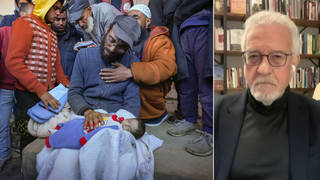
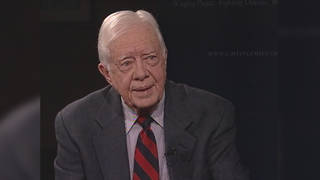
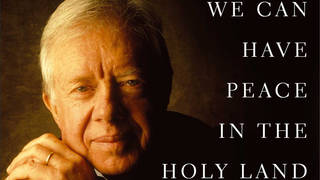





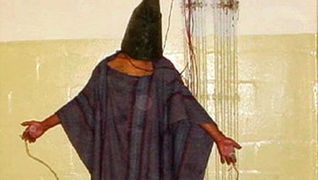
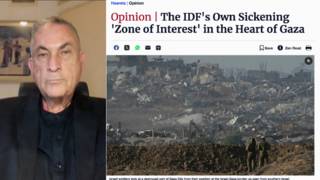
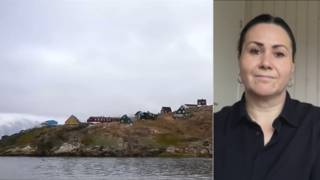
Media Options